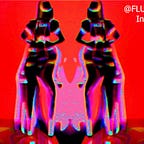From Pixels to Blockchain: Tracing the Evolution of Computer-Generated and Digital Art
Introduction: The advent of computers revolutionized the world of art, enabling artists to explore new creative frontiers and challenge traditional boundaries. Over the years, computer-generated and digital art have evolved significantly, embracing technologies such as artificial intelligence (AI) and blockchain. This article will take you on a detailed journey through the history and development of computer-generated and digital art, highlighting key milestones, influential artists, and groundbreaking works, with a particular focus on AI-generated art.
- The Emergence of Computer Art (1950s-1960s): Computer-generated art finds its roots in the 1950s when early pioneers began experimenting with mainframe computers. A notable example is Ben Laposky’s “Oscillons,” created using an oscilloscope to generate abstract images. In the 1960s, the collaboration between artists and technologists led to the creation of innovative works like Frieder Nake’s “Homage à Paul Klee” and Vera Molnar’s algorithmic compositions.
- The Rise of Digital Art (1970s-1980s): The advent of personal computers in the 1970s opened up new possibilities for digital art. Harold Cohen’s “AARON,” an AI-based program capable of producing original artworks, gained attention during this period. “AARON” utilized a rule-based system to create autonomous abstract compositions, blurring the line between machine and artist. Similarly, Kenneth Knowlton and Leon Harmon’s pioneering work with digital image processing led to the creation of “Studies in Perception” and “Marilyn Monroe,” using a combination of algorithms and photographs.
- Computer Graphics and CGI (1980s-1990s): The 1980s witnessed a significant leap forward with the introduction of computer graphics and computer-generated imagery (CGI) in films. Pixar Animation Studios, co-founded by Ed Catmull and Alvy Ray Smith, produced the first feature-length CGI film, “Toy Story” (1995), revolutionizing animation. The film industry’s embrace of CGI propelled its adoption in various art forms, including digital painting and interactive installations. Artists like Loren Carpenter and John Whitney Jr. created mesmerizing computer-generated visual effects, expanding the realm of digital art.
- AI and Generative Art (1990s-2000s): As AI technologies advanced, artists began experimenting with generative algorithms and neural networks. Harold Cohen’s “AARON” continued to evolve, producing intricate paintings by simulating an artist’s decision-making process. Other notable examples include Karl Sims’ evolutionary artwork “Galápagos,” where virtual organisms evolved and competed for survival, and the works of Casey Reas and Ben Fry, co-creators of the Processing programming language used in generative art.
- Deep Learning and AI Artistic Collaboration (2010s-Present): The advent of deep learning algorithms revolutionized AI-generated art. Artists and researchers explored the potential of neural networks to generate and manipulate images. Mario Klingemann, an artist and AI researcher, created stunning pieces using deep learning techniques, blending traditional art with AI-generated content. Robbie Barrat trained neural networks to create original paintings, showcasing the collaborative aspect of AI and human creativity.
- Blockchain and Digital Art (2010s-Present): The emergence of blockchain technology has brought new possibilities for digital art, particularly in terms of provenance, ownership, and scarcity. Cryptoart, using blockchain-based platforms like Ethereum, allows artists to create unique, verifiable digital artworks. “Everydays: The First 5000 Days” by Beeple (Mike Winkelmann) sold at auction for a staggering $69.3 million, highlighting the growing interest in blockchain-based digital art and the fusion of technology and art.
- Recent Examples of AI Art (2016-Present): In the past five years, AI-generated art has continued to captivate audiences and push the boundaries of creativity. Artists like Refik Anadol have made significant contributions to the field. Anadol is renowned for his large-scale, immersive installations that use AI algorithms to process and visualize vast amounts of data. His work “Machine Hallucination” (2019) transformed a Manhattan gallery into a mesmerizing digital dreamscape, blurring the lines between reality and AI-generated projections.
Additionally, artists like Helena Sarin and Anna Ridler have explored the intersection of AI and art in fascinating ways. Sarin’s work combines AI algorithms with traditional painting techniques to create ethereal and emotive portraits. Ridler utilizes AI to generate intricate patterns and visuals inspired by botanical illustrations and historical archives, resulting in unique and thought-provoking pieces.
Conclusion: Computer-generated and digital art have come a long way since their inception. From early experiments with mainframe computers to the integration of AI and blockchain, artists have continually pushed the boundaries of creativity. As technology evolves, we can expect computer-generated and digital art to continue to flourish, captivating audiences with their innovation and the seamless blend of traditional and digital mediums. AI-generated art opens up exciting possibilities for collaboration between artists and algorithms, leading to new forms of expression that challenge our perception of creativity and artistry. Artists like Refik Anadol, Helena Sarin, and Anna Ridler are just a few examples of the remarkable talent driving the evolution of AI art in recent years, inspiring and engaging viewers in unprecedented ways.
